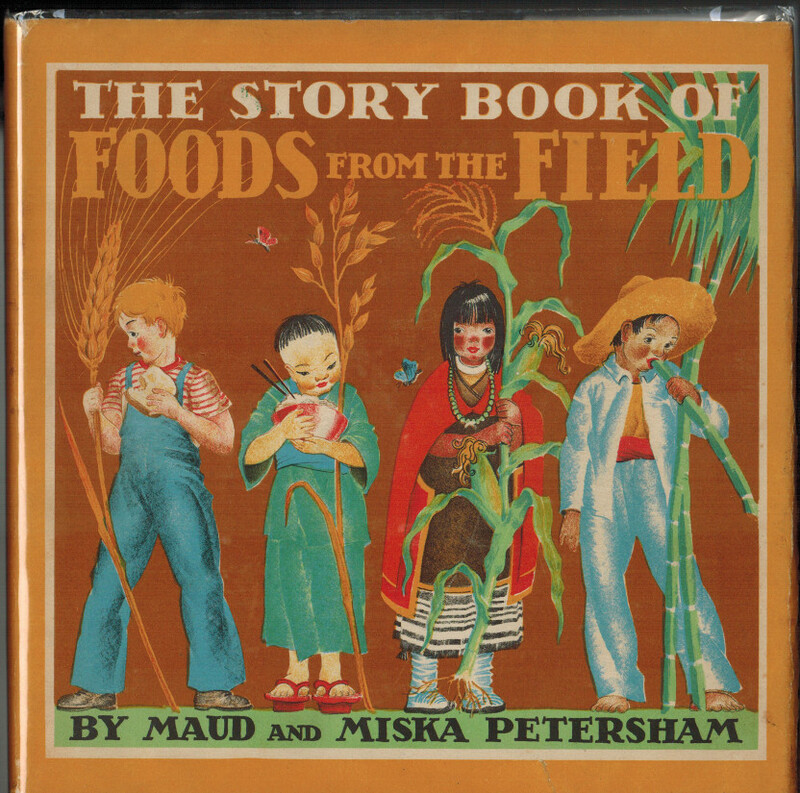The Story Book of Foods from the Field: Wheat, Corn, Rice, Sugar
Item- Title
- The Story Book of Foods from the Field: Wheat, Corn, Rice, Sugar
- Description
-
During the interwar period, author-illustrator team Maud and Miska Petersham created some of the most memorable fiction stories and textbooks for children. With publishers’ renewed interest in children’s books about everyday life, the production story genre was revived in the United States with a series by Janet Smalley, closely followed by the Petersham’s comprehensive series comprised of five schoolbooks: The Story Book of The Things We Use (1933), about houses, food, and transportation; The Story Book of Earth’s Treasures (1935), about gold, coal, oil, iron, and steel; The Story Book of Wheels, Ships, Trains, Aircraft (1935); The Story Book of Foods from the Field (1936), about wheat, corn, rice, sugar; and The Story Book of Things We Wear (1939), about wool, cotton, silk, and rayon. Each of these five covered several commodities that could be purchased as separate volumes (Bader, 93-97). For instance, Foods from the Field includes material on sugar that also appears, with expanded content, in The Storybook of Sugar (1936).
The Petersham volume on food thematizes the universal enjoyment of the fruits of the field, captured by the four figures of different cultural and racial appearances on the cover. Production stories favor repetitive formulas, both in text and image, that allow young readers to make interesting comparisons across different time periods, global locations, and human cultures. This cover’s multicultural message helps readers to reflect on our shared humanity, as all people must nourish their bodies with basic food. However, the cane figure placed next to the others also creates equivalency between families whose food access and fair wages may greatly differ. In practice, not all families are allowed to enjoy the products they work to produce, or conversely, families may have limited diets as a result of growing cash crops. A similar tension between the insensitivity of such comparisons and a desire for diverse representation or multicultural perspectives occurs in other production stories.
The dust jacket for The Story Book of Foods from the Field shows a child with brown skin chewing cane. The same figure of a cane harvester chewing the cane appears in sugar production stories over the past two hundred years, changing to represent the labor force primarily responsible for sugar production, from enslaved Africans to free workers of different races and ethnicities. One possible cultural function of this perennial figure is to offer a cheerful veneer over questionable labor practices. Such an image reassures privileged consumers who purchase and eat sugar far away from where cane is grown that children involved in the sugar labor force have plenty of food—indeed, they enjoy treats, just like children everywhere. For more information on this figure, see The Story Book of Sugar.
- Creator
- Text and image copyright 1936 by Maud Fuller and Miska Petersham. Text and images used under fair use.
- Contributor
- Petersham, Maud Fuller (illustrators)
- Date
- 1936
- Subject
- production story
- food
- sugar
- Rights
- fair use
- Source
- author's copy
- Bibliographic Citation
- Petersham, Maud Fuller and Petersham, Miska. (1936). The Story Book of Foods from the Field: Wheat, Corn, Rice, Sugar. Eau Claire, WI: E.M. Hale.
- Site pages
- Chewing Cane

